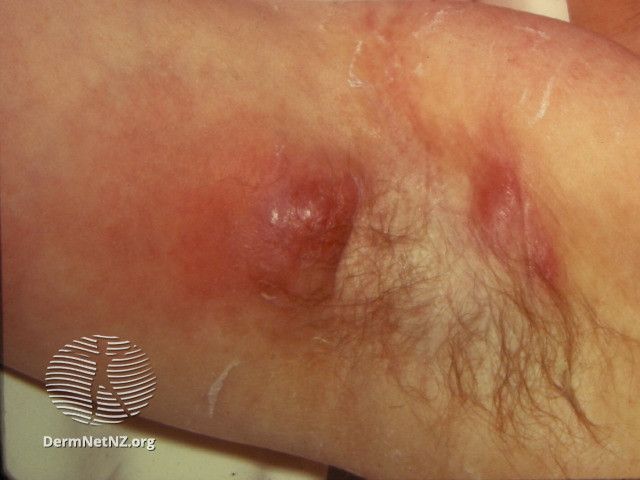- Case-Based Roundtable
- General Dermatology
- Eczema
- Chronic Hand Eczema
- Alopecia
- Aesthetics
- Vitiligo
- COVID-19
- Actinic Keratosis
- Precision Medicine and Biologics
- Rare Disease
- Wound Care
- Rosacea
- Psoriasis
- Psoriatic Arthritis
- Atopic Dermatitis
- Melasma
- NP and PA
- Skin Cancer
- Hidradenitis Suppurativa
- Drug Watch
- Pigmentary Disorders
- Acne
- Pediatric Dermatology
- Practice Management
- Prurigo Nodularis
- Buy-and-Bill
News
Article
Dermatology Times
Surgical Procedures to Consider for Hidradenitis Suppurativa
Author(s):
Maria Aleshin, MD, FAAD, presented surgical procedures for HS that can be performed in the office.
At the 2024 American Academy of Dermatology Annual Meeting in San Diego, California, Maria Aleshin, MD, FAAD, presented surgical procedures to consider for hidradenitis suppurativa (HS) that can be performed in a dermatologist’s office, including laser hair removal, incision and drainage, surgical deroofing, and more.1
Aleshin, a board-certified dermatologist, clinical associate professor of dermatology, director of the hidradenitis suppurativa clinic, and co-director of the inpatient dermatology consult service at Stanford Medicine in California, presented patient cases of HS and reviewed the surgical procedure she chose and why.
Case #1
The first patient case was a 27-year-old female with a history of nodules on the inguinal folds and medial thighs. The patient was experiencing HS flares from shaving and sweating and was initially treated with a benzoyl peroxide 5% wash, resorcinol 15% cream, and spironolactone 100mg daily.
“The first thing we talked about with our patient was laser hair removal. Laser hair removal is thought to work through selective photothermolysis of the follicular unit, which makes sense as the hair follicle is thought to be at the center of the pathogenesis of HS. Many different lasers and light-based therapies have been studied for HS, but the 1064nm Nd:YAG has the most evidence,” said Aleshin.
Four prospective studies on the 1064nm Nd:YAG have evaluated the efficacy of 2 to 4 sessions per month and demonstrated 31.6% to 73% improvement in the inguinal, axillary, and inframammary folds.2
Aleshin’s take-home message from this case was that laser hair removal seems to be more effective for earlier stages of HS such as Hurley I-II, especially in the inguinal and the axillary folds, and multiple sessions are needed.
Case #2
The second patient case was a 29-year-old male with severe HS presenting with 20/10 pain. The patient was initially treated with infliximab 10mg/kg every 4 weeks. The patient had been doing well on infliximab according to Aleshin, but missed a treatment due to a family emergency and quickly developed severe pain to the point of not being able to move his arms.
“In this case, we discussed incision and drainage, and this really is reserved just for painful abscesses for symptom control. One study posted a recurrence rate of nearly 100% when we do incision and drainage, but that hasn't been my experience. However, I'm not doing this to treat the patient’s HS. I'm doing this to treat their pain. My thought is if I don't offer this procedure to them, they're probably going to self-lance at home or they're going to go to the emergency room, which is what I'm trying to prevent,” said Aleshin.
Aleshin’s take-home message from this case was to anesthetize the area that will be cut to decrease pain for patients, consider using a punch tool when you choose incision, and remember that incision and drainage are only to manage the pain of HS.
References
- Aleshin M. Procedures you can do in your office for HS. Presented at: 2024 American Academy of Dermatology Annual Meeting; March 8-12, 2024; San Diego California.
- Naouri M, Maruani A, Lagrange S, et al. Treatment of hidradenitis suppurativa using a long-pulsed hair removal neodymium:yttrium-aluminium-garnet laser: a multicenter, prospective, randomized, intraindividual, comparative trial. J Am Acad Dermatol. 2021;84(1):203-205. doi:10.1016/j.jaad.2020.04.117







